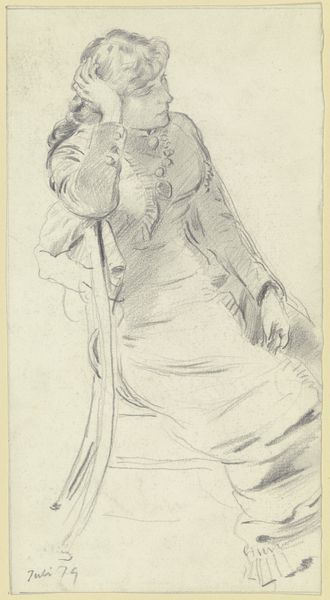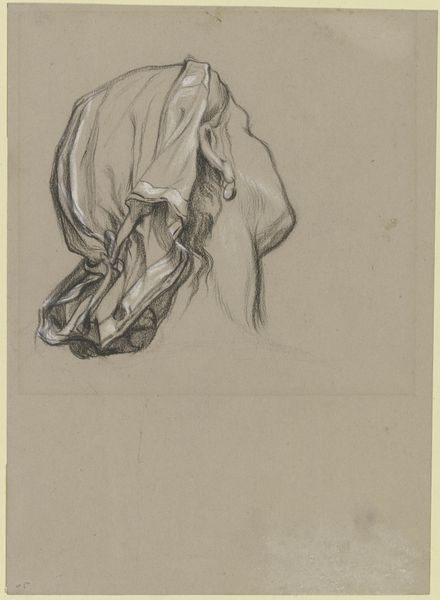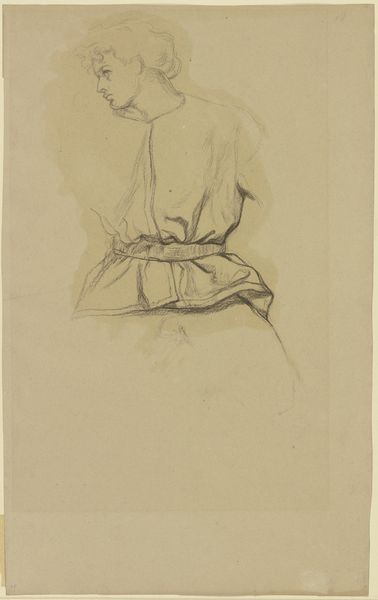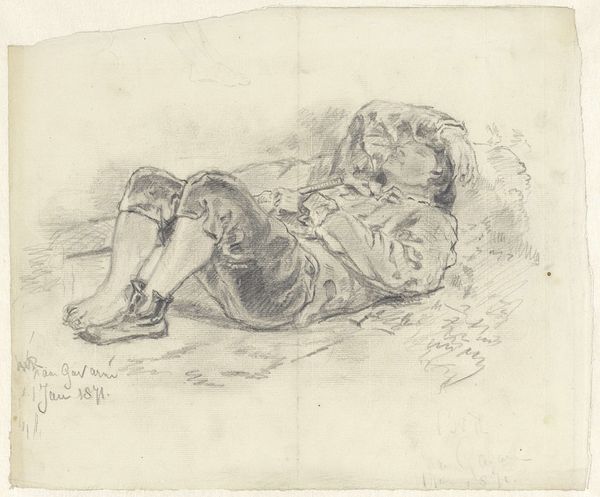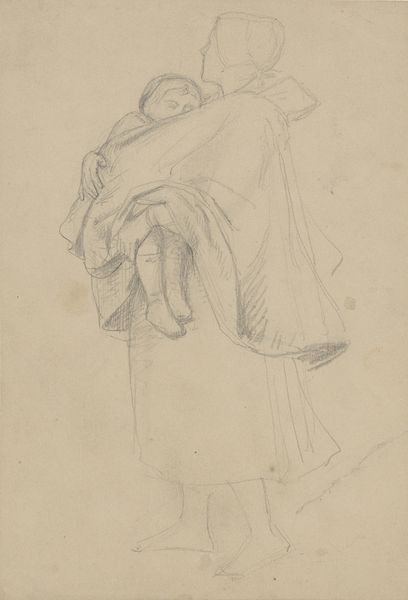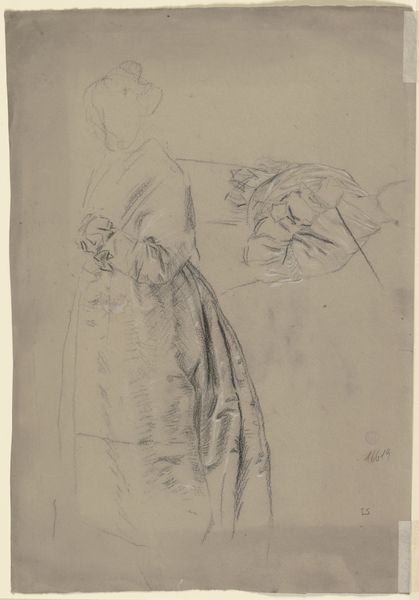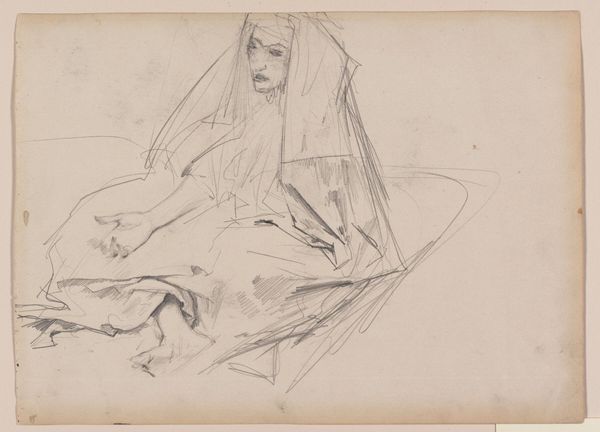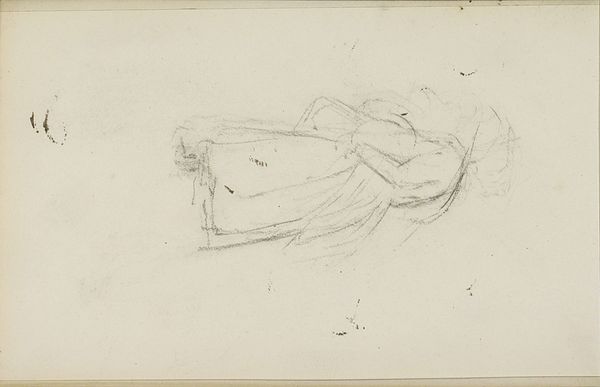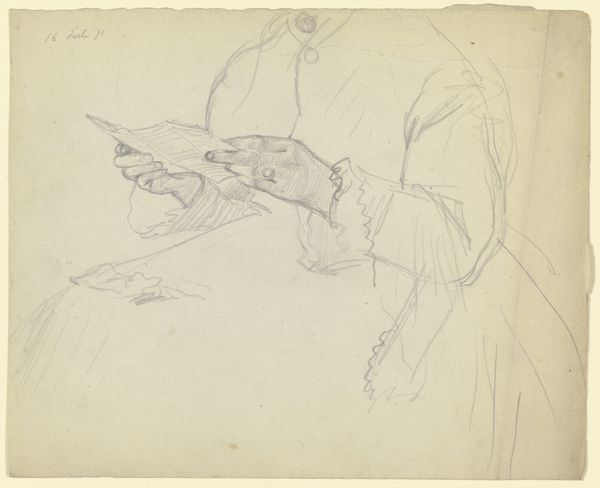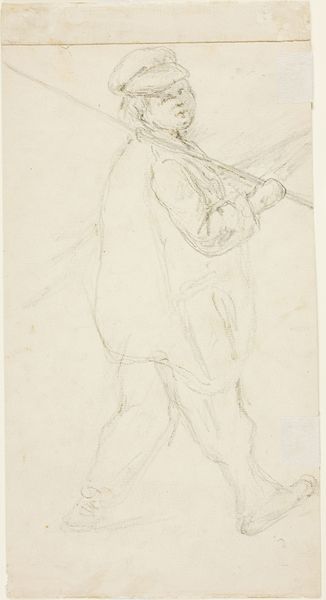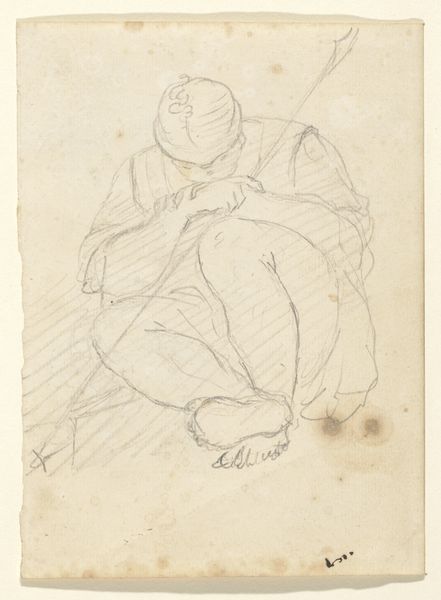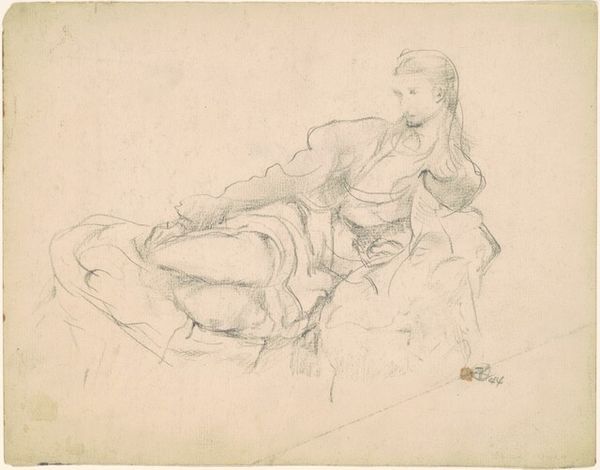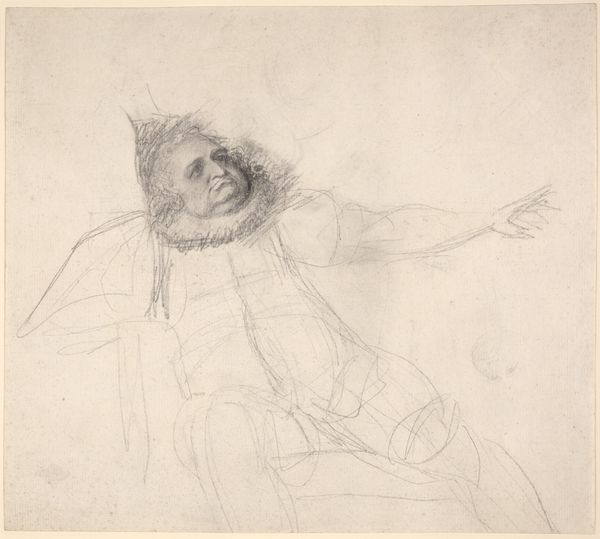
Copyright: Public Domain
Editor: This pencil drawing from 1850 is called "Römerin, ihr Haar flechtend" by August Lucas. It depicts a woman arranging her hair, and it feels very intimate, like a private moment captured. What stands out to you? Curator: The act of braiding itself is rich with symbolic weight. Hair, historically, has represented everything from freedom and sexuality to mourning and subservience. Seeing this "Roman woman" caught in this everyday ritual, we might ask what Lucas is suggesting about identity and perhaps the burdens and aspirations of womanhood in his time. Editor: So, the seemingly simple act is actually layered with possible meanings. The title refers to a "Roman woman." Does that add another layer of cultural significance? Curator: Absolutely. Think of Rome as a cultural touchstone, symbolizing classical ideals and a glorious past. Lucas could be subtly linking this woman to those ideals, maybe hinting at timeless qualities or, perhaps more poignantly, the distance between the ideal and the reality of 19th-century life. What emotional tone do you pick up in the pencil strokes? Editor: They seem very soft, almost tentative, and there are some smudges too. It’s not a photorealistic work but something more personal and expressive. Curator: Precisely! The medium becomes the message. The softness evokes vulnerability, lending the image a quality of wistful reflection. It’s an invitation to connect with her emotional space. Considering her slightly bowed head and lowered gaze, is she content or burdened by those ideals? Editor: It’s fascinating how much meaning can be drawn from such a simple sketch. I see so much more in it now. Curator: Visual symbols invite us to interpret how meaning transcends across generations, reminding us that cultural memory echoes even in quiet moments.
Comments
No comments
Be the first to comment and join the conversation on the ultimate creative platform.
